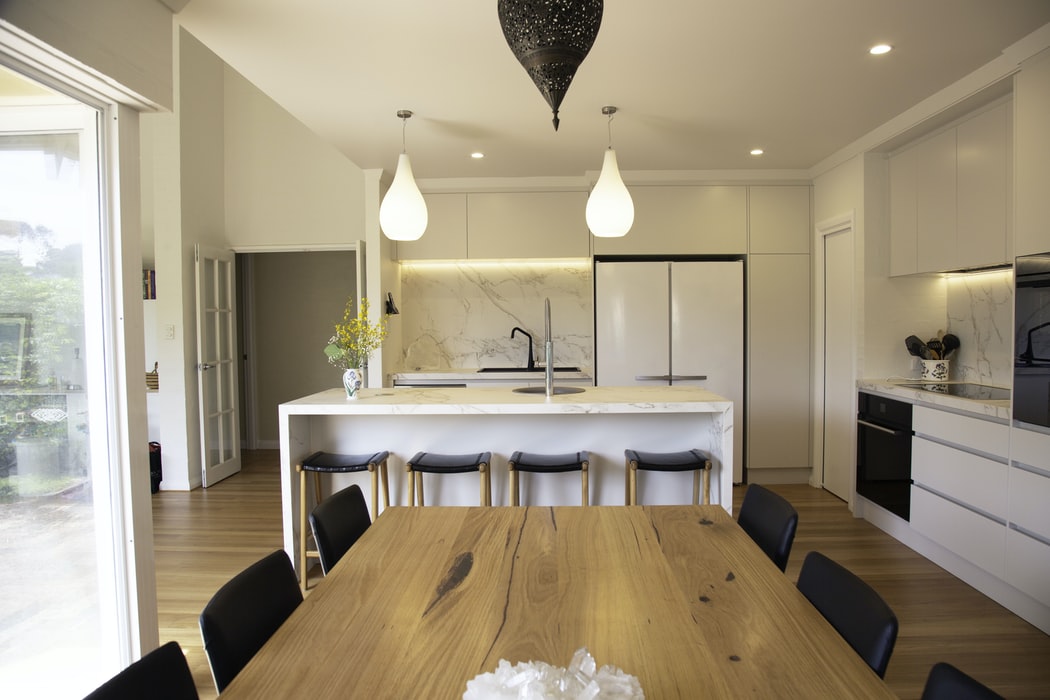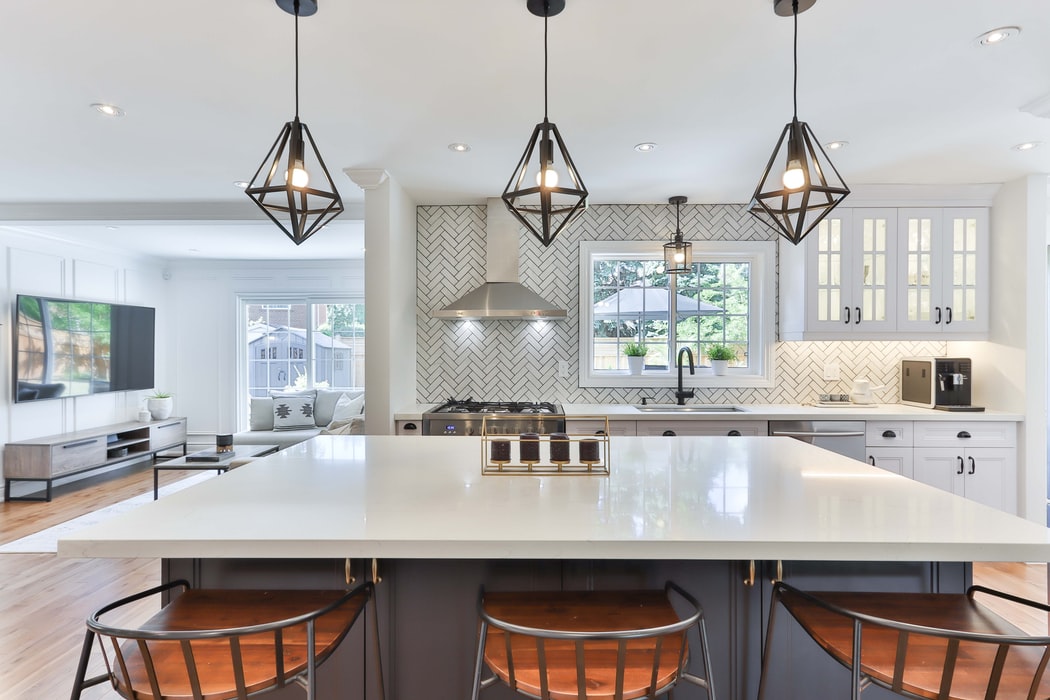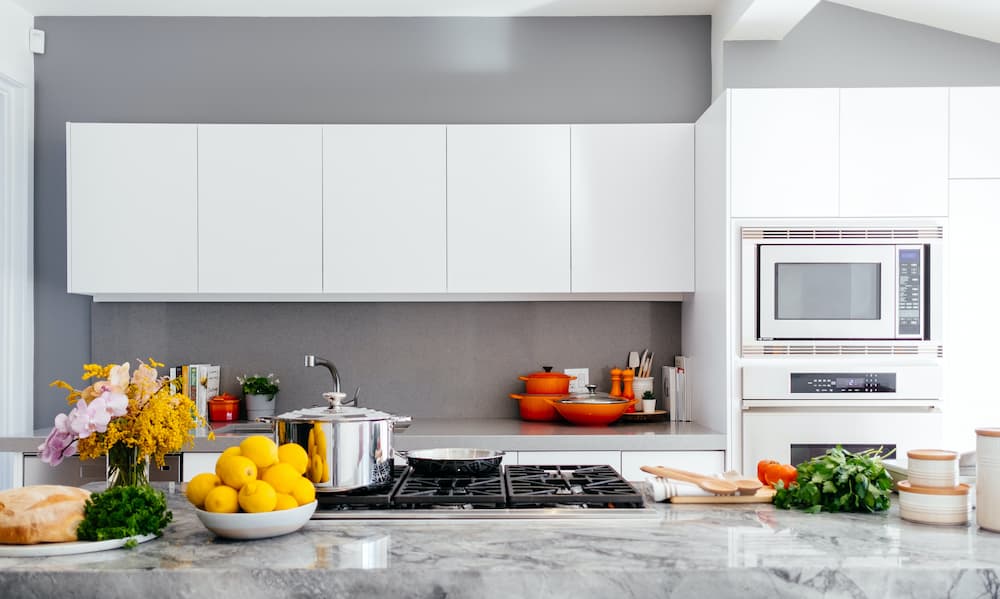I’ve put together a 10-point plan on how to create a kitchen design project on your own. Although there is a free and more adequate option, and for my taste, doing the project yourself is a perversion.
If you know the basic dimensions of the modules and the basic principles, it is easy to make a kitchen design yourself. You don’t even need software, just a sheet of paper and a pen. But even that isn’t necessary if you’re willing to cheat a little.

Doing a kitchen project yourself
If you get the perverse pleasure of making a project yourself and therefore don’t want to use kitchen guys, then you’re weird, but okay.
The algorithm for you will be as follows:
- Clean your kitchen, book your restoration & flood services in your city
- Whether you need a breakfast bar.
- Determining the shape. I.e. along which walls the kitchen will stand.
- Make a list of ALL planned appliances, including non-installed ones.
- Next to each item, mark the width to be built in. For example, the dishwasher is 45 cm or 60 cm, the oven 60 cm, etc.
- Divide the wall into modules on the bottom drawers, taking into account the size of recessed equipment.
- Dividing the wall by modules on top, trying to make all the top drawers of equal width.
- Make at least 2 options for the relative position of the refrigerator, sink, and hob. Show them to everyone we catch, trying to figure out which is better.
- Choose the type of fittings to open each module, think about whether they will not interfere with each other.
- Get someone to critique your design and finish the final version.
- Do you want to illuminate the apron from under the upper cabinets? Now’s the time to designate it.
All appliances are built-in modules 45 or 60 centimeters wide.
It looks best when all the upper cabinets are the same width. Make all strictly the same, and only the edge cabinet a different residual width. Less than 40 cm in width is better not to do.
You may be concerned about the depth of the lower and upper modules, the width of the countertop, etc. Completely in vain, somewhere you will order furniture or at least a saw cut, so they know all there, these dimensions are standard:
- Depth of the upper cabinet 40 cm, usable depth ~35 cm.
- Depth of the bottom cabinet ~50 cm.
- The width of the countertop is ~59 cm.
You can play with the height of the tabletop from the floor, adjusting it to your own height so that when cooking your arms are slightly bent in the elbows. The standard range of countertop height in the kitchen is 82-92 cm.
Kitchen countertop height from the floor:
- Height to 165 cm, height to 82 cm.
- Height 165-175 cm, height 87 cm.
- Height over 175 cm, height 92 cm.

How to make a kitchen project yourself
Not everything for you to do in a free planning solution (and in the paid too). A kitchen project with an arrangement of furniture, design, and drawing for sawing you will give, but the plan of electricity, ventilation, floor joints in the kitchen – we do it ourselves.
Placement of all outlets. For this, it is important to know not only the built-in appliances: coffee maker, kettle, toaster, blender, etc. Separate outlet under the sink in case of a waste chopper or filter pump.
All light circuits and location of all switches. Important: The standard switch on the backlighting of the apron button on it – a mistake. Make all auxiliary lights to the normal switch at the entrance to the kitchen – you will use it more often than the overhead light. It is especially important to make a normal switch in the kitchen-living room.
Knobs. No, you can’t leave them for later. They make a big difference in appearance. Plus, for corner or small kitchens, there may be nuances with the opening of the doors.
Connecting the hood properly involves a tee with a check valve that needs to go somewhere. If the kitchen is not up to the ceiling, no problem. But a proper kitchen is made to the ceiling – think where to make a free exhaust outlet.
Should I do the redevelopment?
If you have a major renovation and there is the possibility of redevelopment, then first you need to think about whether you want to change the geometry of the room. To decide if you need to remodel, answer the following questions:
- How many family members will be in the kitchen at one time.
- Do you actively use the kitchen for cooking, eating out, or generally ordering meals and the kitchen equals a refrigerator for you?
- Places of utilities and the ability to hide them during the repair.
If you are young at least in spirit and often have guests, it might make sense to combine the kitchen with the living room, because modern kitchen design is usually about open space.
